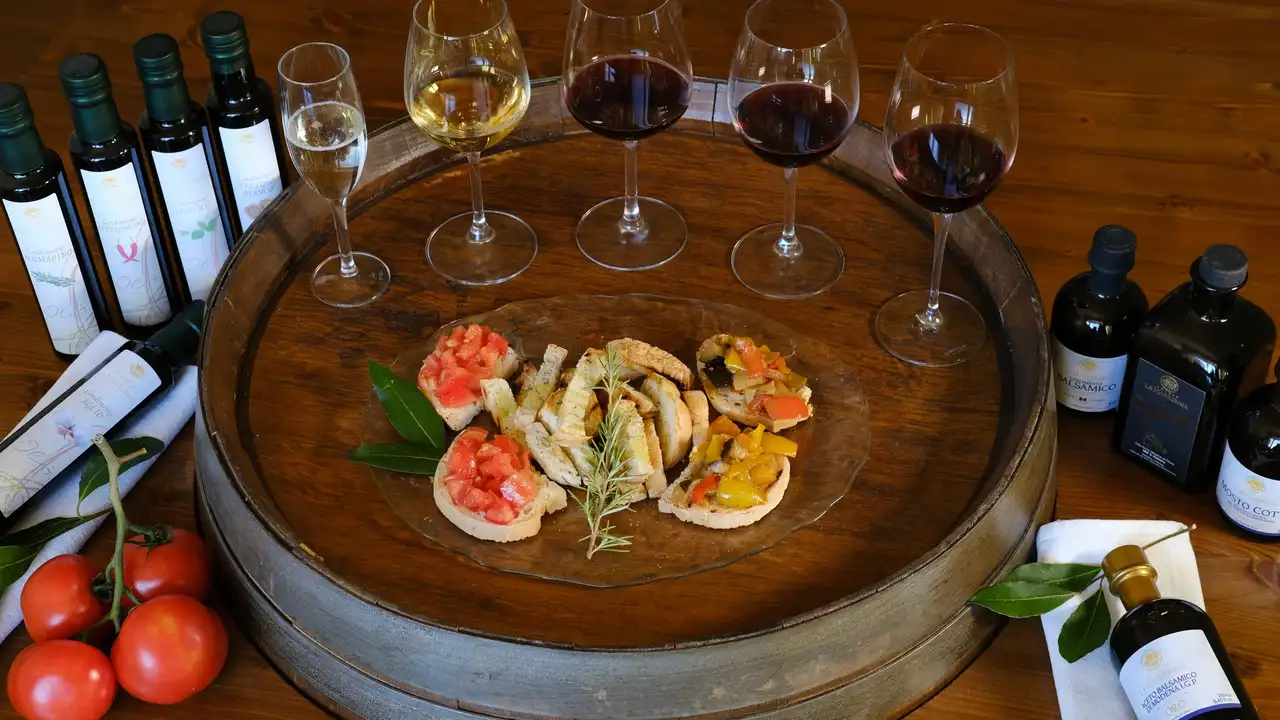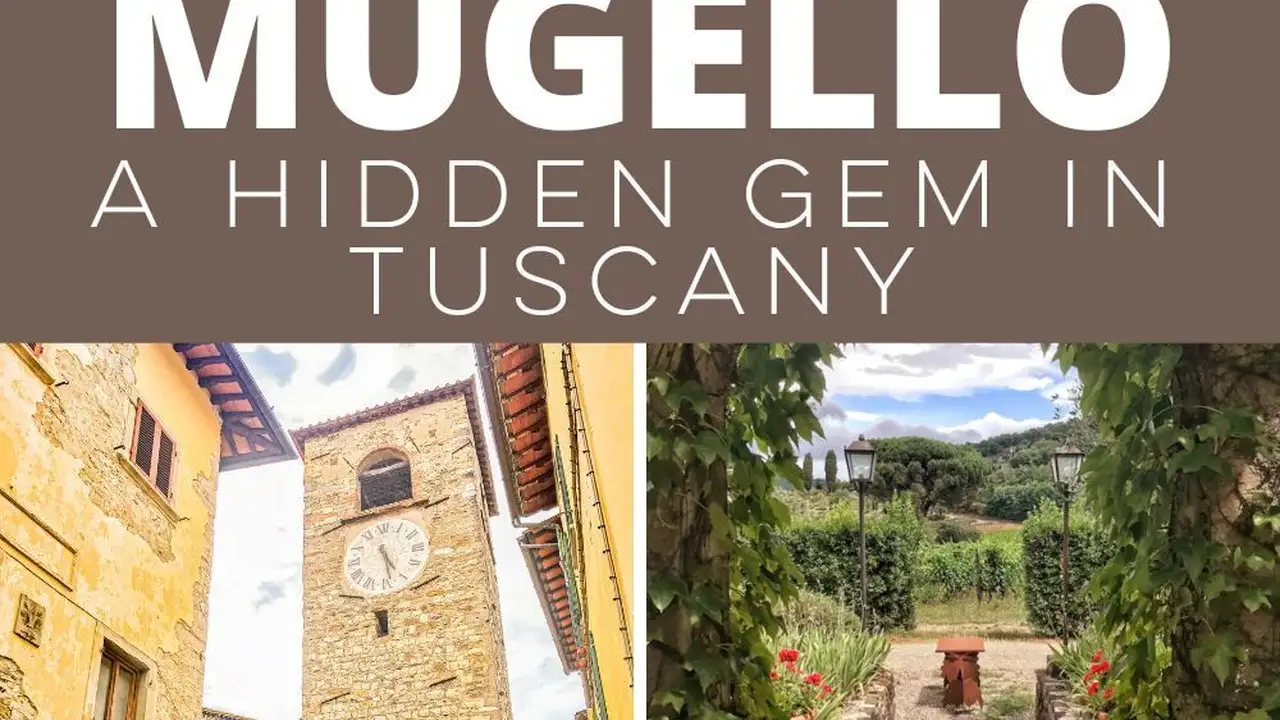Olive Oil Tasting in Tuscany: A Sensory Experience

Discover the world of Tuscan olive oil. Learn about the different varieties, production methods, and tasting techniques. Experience the sensory pleasure of tasting high-quality olive oil.
Tuscan Olive Oil Tasting A Guide to Liquid Gold
Tuscany, a region renowned for its rolling hills, vineyards, and of course, olive groves, is a paradise for food lovers. Among its many culinary treasures, Tuscan olive oil stands out as a symbol of quality and tradition. Olive oil tasting in Tuscany isn't just about sampling different oils; it's a sensory experience that connects you to the land, the history, and the passion of the local producers. So, ditch the supermarket olive oil for a day and dive into the world of liquid gold!
Why Tuscan Olive Oil is Special Understanding the Terroir
What makes Tuscan olive oil so special? It all comes down to the "terroir," a French term that encompasses the environmental factors affecting a crop's character, including soil, climate, and topography. Tuscany's unique terroir creates the ideal conditions for growing olives with distinct flavors and aromas. The region's well-drained soil, sunny climate, and gentle slopes contribute to the olives' high polyphenol content, which gives the oil its characteristic peppery bite and health benefits. Also, the traditional cultivation methods passed down through generations of farmers ensures the olives are carefully nurtured from the tree to the press. These methods prioritize quality over quantity, resulting in an olive oil that is truly exceptional.
Olive Varieties in Tuscany Exploring the Flavor Profiles
Tuscany is home to several olive varieties, each with its unique flavor profile. Here are a few of the most common:
- Frantoio: Known for its fruity aroma, herbaceous notes, and peppery finish.
- Moraiolo: Characterized by its intense flavor, bitterness, and spiciness.
- Leccino: A milder variety with a delicate fruity flavor and almond notes.
- Pendolino: Often used as a pollinator, but also contributes to the oil's overall complexity.
Each variety contributes to the final blend, creating a complex and nuanced flavor that reflects the Tuscan landscape.
The Olive Oil Production Process From Grove to Bottle
The production of Tuscan olive oil is a labor of love that begins with the harvest. Olives are typically harvested by hand in the fall, when they are at their peak ripeness. The olives are then transported to a local mill, where they are washed, crushed, and pressed to extract the oil. Traditional stone mills are still used by some producers, while others employ modern machinery to ensure efficiency and hygiene. The extracted oil is then filtered and stored in stainless steel tanks to preserve its freshness and quality. Finally, the olive oil is bottled and labeled, ready to be enjoyed.
How to Taste Olive Oil Like a Pro Sensory Evaluation Techniques
Tasting olive oil is an art that requires practice and attention to detail. Here's a step-by-step guide to help you taste olive oil like a pro:
- Pour: Pour a small amount of olive oil into a tasting glass (usually a small, dark-colored glass to prevent visual bias).
- Warm: Warm the glass in your hands to release the aroma.
- Swirl: Swirl the oil gently to coat the sides of the glass.
- Smell: Inhale deeply, paying attention to the aroma. Look for fruity, herbaceous, or nutty notes.
- Slurp: Take a small sip of the oil and hold it in your mouth.
- Evaluate: Pay attention to the flavor, texture, and aftertaste. Look for bitterness, spiciness, and pungency.
- Swallow: Swallow the oil and note any lingering sensations.
Remember to take notes on your impressions to help you compare different oils. Focus on the aroma, taste, and mouthfeel. Consider the intensity of the flavors and the balance between bitterness, spiciness, and fruitiness. Don't be afraid to express your personal preferences – there's no right or wrong answer!
What to Look For in High-Quality Olive Oil Key Characteristics
When choosing olive oil, look for the following characteristics:
- Extra Virgin: This is the highest grade of olive oil, meaning it is made from the first pressing of the olives and has a low acidity level (less than 0.8%).
- Cold-Pressed: This indicates that the oil was extracted without the use of heat, which preserves its flavor and nutrients.
- Origin: Look for olive oil that is specifically labeled as "Tuscan" or "Product of Italy" to ensure authenticity.
- Harvest Date: Choose olive oil that was harvested recently (within the past year) to ensure freshness.
- Appearance: High-quality olive oil should have a vibrant green or golden color.
- Aroma: The oil should have a pleasant, fruity aroma with no off-putting odors.
- Taste: The oil should have a balanced flavor with bitterness, spiciness, and fruitiness.
Recommended Tuscan Olive Oils Products and Pricing
Here are a few recommended Tuscan olive oils, along with their approximate prices and ideal uses:
- Fattoria di Maiano Olio Extra Vergine di Oliva: (Approx. $35/500ml) A well-balanced oil with fruity and herbaceous notes. Excellent for drizzling over salads, grilled vegetables, and bruschetta.
- Laudemio Frescobaldi Olio Extra Vergine di Oliva: (Approx. $45/500ml) A premium oil with intense flavor and a peppery finish. Best used as a finishing oil to enhance the flavor of pasta dishes, soups, and roasted meats.
- Fontodi Flaccianello della Pieve Olio Extra Vergine di Oliva: (Approx. $50/500ml) A complex and flavorful oil with notes of artichoke and almond. Ideal for dipping bread, making pesto, or adding a touch of flavor to seafood dishes.
Comparative Analysis: Fattoria di Maiano is a great all-around choice, offering excellent value for money. Laudemio Frescobaldi is a step up in terms of intensity and complexity, making it ideal for special occasions. Fontodi Flaccianello is the most expensive of the three, but its unique flavor profile makes it a worthwhile splurge for serious olive oil enthusiasts.
Where to Go Olive Oil Tasting in Tuscany Best Farms and Mills
Many farms and mills throughout Tuscany offer olive oil tasting experiences. Here are a few popular options:
- Fattoria di Maiano (Florence): Offers guided tours of their olive groves and mill, followed by a tasting of their award-winning olive oils.
- Azienda Agricola Montefioralle (Greve in Chianti): A family-run farm that produces organic olive oil using traditional methods. They offer personalized tastings and cooking classes.
- Frantoio Santa Tea (Reggello): A modern olive mill that offers tours and tastings, showcasing the latest technology in olive oil production.
Remember to book your tasting in advance, especially during peak season.
Pairing Olive Oil with Food Enhancing Your Culinary Creations
Olive oil can be used to enhance the flavor of a wide variety of dishes. Here are a few pairing suggestions:
- Salads: Drizzle a light, fruity olive oil over salads to add a touch of flavor and richness.
- Grilled Vegetables: Brush grilled vegetables with olive oil to keep them moist and flavorful.
- Pasta Dishes: Use olive oil as a base for pasta sauces or drizzle it over cooked pasta to add a touch of richness.
- Soups: Add a swirl of olive oil to soups just before serving to enhance the flavor and texture.
- Bread: Dip crusty bread in olive oil for a simple and satisfying appetizer.
- Meat and Fish: Use olive oil to marinate meat and fish or drizzle it over cooked dishes to add flavor and moisture.
Health Benefits of Tuscan Olive Oil A Nutritional Powerhouse
Tuscan olive oil is not only delicious but also packed with health benefits. It is a rich source of monounsaturated fats, which are beneficial for heart health. It also contains antioxidants, such as polyphenols, which can help protect against cell damage and reduce the risk of chronic diseases. Regular consumption of olive oil has been linked to lower cholesterol levels, reduced inflammation, and improved brain function. So, indulge in the flavors of Tuscany and reap the health benefits of this nutritional powerhouse!
Storing Olive Oil Properly Preserving Freshness
To preserve the freshness and quality of your olive oil, store it in a cool, dark place away from heat and light. Avoid storing olive oil near the stove or in direct sunlight, as these conditions can cause it to degrade. Use a tightly sealed bottle or container to prevent oxidation. Olive oil typically has a shelf life of 12-18 months, but it's best to use it within a few months of opening for optimal flavor.
:max_bytes(150000):strip_icc()/277019-baked-pork-chops-with-cream-of-mushroom-soup-DDMFS-beauty-4x3-BG-7505-5762b731cf30447d9cbbbbbf387beafa.jpg)





